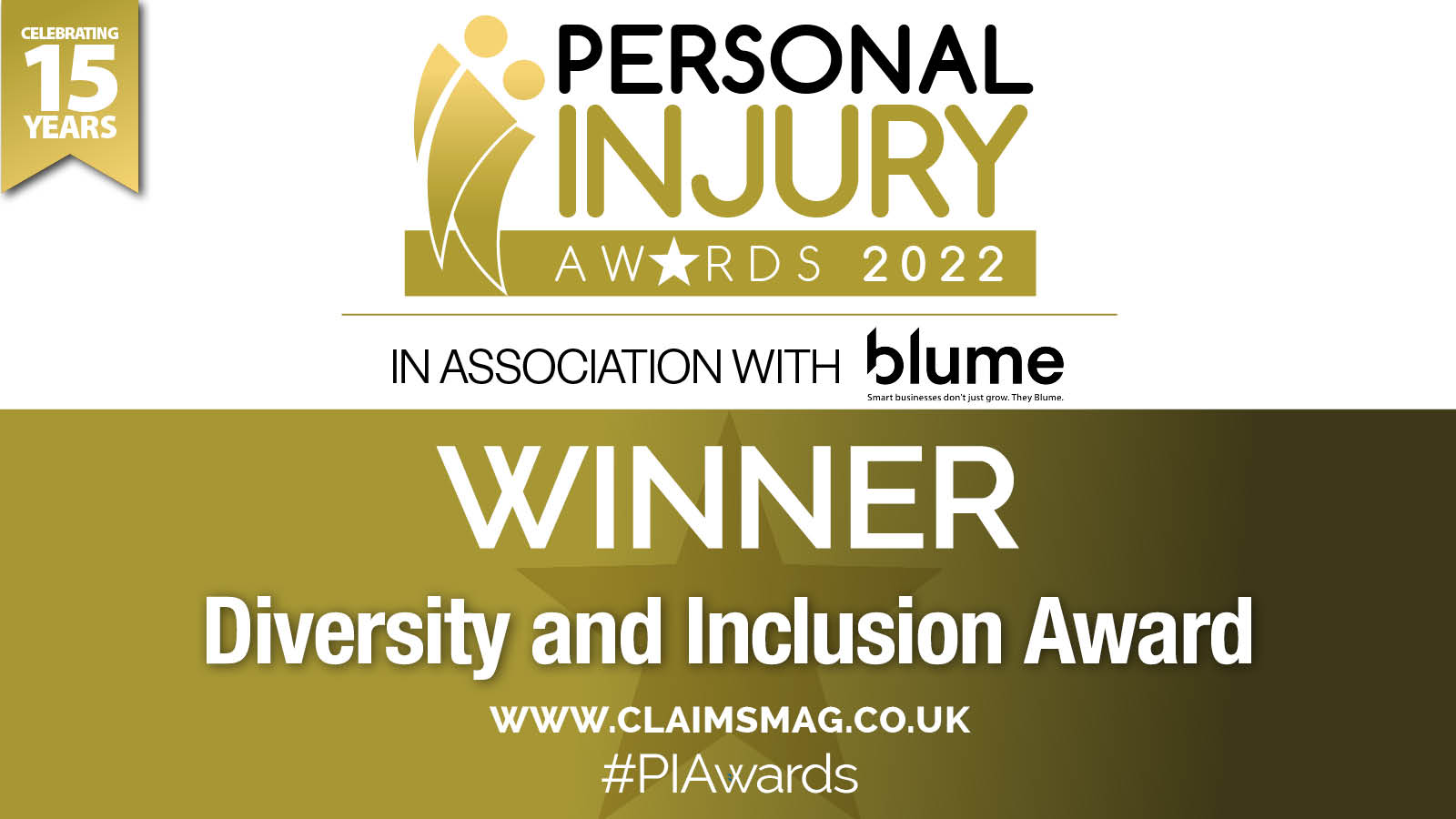<!-- wp:paragraph -->
<p><em>Avaia Williams and Chloe Branton provide an overview and analysis of the new guidance issued by the Family Justice Council on neurodivergence within the family courts.</em></p>
<!-- /wp:paragraph --><!-- wp:paragraph -->
<p><strong>Introduction</strong></p>
<!-- /wp:paragraph --><!-- wp:paragraph -->
<p>Neurodivergence is a broad term, with the phrase considered to be coined by the sociologist Judy Singer. It commonly refers to people who are diagnosed or present with ADHD, Autistic Spectrum Conditions, and neurodevelopmental conditions such as Dyspraxia, Dyscalculia and Dyslexia. However, the umbrella remains undefined by law, as such the term can include wider, and potentially unexpected, conditions and diagnoses including intellectual disabilities and mental health conditions.</p>
<!-- /wp:paragraph --><!-- wp:paragraph -->
<p>The judiciary, via the Equal Treatment Bench Book, still places neurodiversity under the broad umbrella of ‘mental disability’. Put simply, neurodiversity refers to the different ways a person’s brain processes, retains, and uses information compared to most of society.</p>
<!-- /wp:paragraph --><!-- wp:paragraph -->
<p>Vital guidance has finally been issued on how neurodiversity and the Family Justice System interact, or should interact. In January, the Family Justice Council published guidance on neurodiversity within the family justice system for practitioners, hopefully adding to the sea change currently taking place in family law and moving towards a more understanding approach to many who come into contact with the family courts.</p>
<!-- /wp:paragraph --><!-- wp:paragraph -->
<p><strong>Neurodiversity and What It Means</strong></p>
<!-- /wp:paragraph --><!-- wp:paragraph -->
<p>Neurodiversity acknowledges the natural range of differences in how people’s brains work. Historically, these conditions have often been misunderstood or regarded solely as disorders needing a “cure.” However, there is a growing recognition that neurodivergent individuals simply process and respond to the world differently, and that there is no single, correct way for a brain to function. Neurodiversity recognises cognitive differences between how people think, learn and behave.</p>
<!-- /wp:paragraph --><!-- wp:paragraph -->
<p>They often bring particular strengths (such as attention to detail, creativity, principled thinking) as well as challenges (including difficulty with social interaction, concentration, sequencing information, or sensory overload).</p>
<!-- /wp:paragraph --><!-- wp:paragraph -->
<p>Roughly 15% of the population is thought to be neurodivergent, though accurate figures are complicated by underdiagnosis, stigma and the broad umbrella of neurodiversity Many neurodivergent people, particularly those in minority ethnic groups and older adults, may struggle to obtain a formal diagnosis, or where they do, may not wish to disclose it. In particular, autistic women and girls and those from minority ethnic backgrounds are considered to be underdiagnosed due to outdated stereotypes and diagnostic criteria.</p>
<!-- /wp:paragraph --><!-- wp:paragraph -->
<p>In the context of family proceedings, recognising neurodiversity is important not only for ensuring equitable treatment and fair access to justice, but also for promoting better outcomes for children and families. Unmet needs, whether relating to communication, sensory sensitivities, or comprehension, can negatively impact how parties and witnesses engage with proceedings, risking injustice and procedural unfairness.</p>
<!-- /wp:paragraph --><!-- wp:paragraph -->
<p>Neurodiversity parents in particular can face challenges in the way they are assessed by professionals and real care and attention is needed to ensure fair treatment and assessment. In addition, neurodiverse conditions can be co-morbid (or co-occurring) presenting different challenges for the individual as the support they would benefit from may be different to those who only have 1 of those conditions. </p>
<!-- /wp:paragraph --><!-- wp:paragraph -->
<p>In his foreword to the guidance, the President of the Family Division, a Chair of the Family Justice Council, Sir Andrew McFarlane, notes that:</p>
<!-- /wp:paragraph --><!-- wp:paragraph -->
<p><em>“The universally applicable principle upon which the guidance sits, is that understanding an individual’s needs leads to better participation, and more effective justice. This principle encourages a system that, with relatively light adjustments, can improve participation and outcomes for children and families. I encourage practitioners working within the Family Justice System to read the guidance carefully and to consider how they can adopt best practice.”</em></p>
<!-- /wp:paragraph --><!-- wp:paragraph -->
<p><strong>Breakdown of the Guidance</strong></p>
<!-- /wp:paragraph --><!-- wp:paragraph -->
<p>The recent guidance is built upon the principle that understanding an individual’s needs leads to better participation and more effective justice. It highlights several core areas:</p>
<!-- /wp:paragraph --><!-- wp:paragraph -->
<p><span style="text-decoration: underline;">Recognising Neurodivergence</span></p>
<!-- /wp:paragraph --><!-- wp:paragraph -->
<p>Beginning with the beginning, the guidance gives an overview to terminology, and why this is important, outlining terms such as “neurotypical” (the ‘neuro majority’) and “neurodivergent” (the ‘neuro minority’) and underscores that each individual will have a unique profile of strengths and needs. Helpfully, the guidance provides a table of limitations and strengths which may be experienced by those with specific conditions, this includes things like communication difficulties for those with autism and strong verbal skills for those with dyslexia. This table will be particularly helpful for those who are new to the concept of neurodiversity, and will be a useful tool for practitioners.</p>
<!-- /wp:paragraph --><!-- wp:paragraph -->
<p>Of particular note, the guidance gives an overview of ‘masking’; many neurodivergent individuals develop coping strategies to hide their traits and to ‘fit in’, particularly in stressful settings like courts. This can be exhausting and may lead professionals to underestimate or overlook support needs. The guidance describes masking as:</p>
<!-- /wp:paragraph --><!-- wp:paragraph -->
<p><em>“…when someone uses strategies to make signs of their neurodivergence less obvious to other people. ‘Masking’ can often be a difficult and exhausting process. With or without ‘masking’, neurodivergence is often not obvious from the outside.”</em></p>
<!-- /wp:paragraph --><!-- wp:paragraph -->
<p>Whilst the guidance is in broad terms, it is important to note that, neurodivergence is specific to each individual, as the guidance notes:</p>
<!-- /wp:paragraph --><!-- wp:paragraph -->
<p><em>“Each neurodivergent person will have their own unique profile and support needs with a wide range of presentations. Unhelpful stereotypes and inaccurate assumptions may compound problems in identifying neurodivergence, especially people in minority ethnic groups, women, and older people.”</em></p>
<!-- /wp:paragraph --><!-- wp:paragraph -->
<p><span style="text-decoration: underline;">Why It Matters in Family Proceedings</span></p>
<!-- /wp:paragraph --><!-- wp:paragraph -->
<p>While data on the topic is quite limited, there is strong evidence that neurodivergent people are overrepresented among court users. Underdiagnosis (especially among women and minority ethnic groups) further complicates the picture. The guidance suggests that a failure to account for neurodivergence within family justice will impact children and families, notably in two key ways:</p>
<!-- /wp:paragraph --><!-- wp:list {"ordered":true} -->
<ol class="wp-block-list"><!-- wp:list-item -->
<li>In assessments, whether undertaken pre-proceedings or during proceedings, or even after in some cases (the clear consequence of failing to consider neurodivergence in assessments, such as parenting assessments, being that the conclusions or analysis may be inherently flawed).<br></li>
<!-- /wp:list-item --><!-- wp:list-item -->
<li>As barriers to effective participation, thereby restricting justice and access to a fair trial (simply put, in the same way we put in participation measures for vulnerable witnesses to ensure they best engage, a failure to account for any measures that may support neurodivergent people naturally results in them not best engaging in proceedings).</li>
<!-- /wp:list-item --></ol>
<!-- /wp:list --><!-- wp:paragraph -->
<p>The guidance references Articles 6 (right to a fair trial) and 8 (the right to respect for private and family life) of the European Convention, plus Article 12 of the UN Convention on the Rights of the Child (UNCRC) which concerns respecting the views of the child, recognising each child has the right to express their views, feelings and wishes. These rights underscore the requirement that all parties and children can participate meaningfully, and demonstrates the risk of not considering the impact of any neurodivergence. The guidance states:</p>
<!-- /wp:paragraph --><!-- wp:paragraph -->
<p><em>“…neurodivergent adults or children may not have the benefit of a full understanding of their functioning. This underlines the importance of practitioners being aware of neurodivergence and how it affects individuals, especially children. <strong>That awareness is vital when considering if the parenting of a child meets the ‘good enough’ standard as well as what support families might need in providing a particular child with ‘good enough’ parenting.</strong>”</em></p>
<!-- /wp:paragraph --><!-- wp:paragraph -->
<p>The scope of the guidance is aimed at addressing barriers to participation and ensure fair treatment. <strong><em>D and E (Parent with Autism)</em></strong> [2020] EWFC B18 set out the importance of recognising the needs of neurodivergent participants in the family courts, noting at [148]:</p>
<!-- /wp:paragraph --><!-- wp:paragraph -->
<p><em>“That no parent must be precluded from being able to parent effectively on account of a disability is a bedrock principle of family law. The extensive specialist expert evidence in this case reaffirms the importance of recognising that parents with autism are as individual as any other parent. There is a risk that professionals may apply a set of criteria or expectations in relation to parents in light of a diagnosis of autism without fully exploring that parent's strengths and weaknesses. It is also important that a parent does not begin to explain or justify any difficulties in their parenting purely because of a diagnosis of autism. It is equally, if not more important, for professionals working with parents with autism to be alert to and take account of the parent's individual needs when working with them, bearing in mind at all times the well-established principle that intervention by a Local Authority in a family may be appropriate but that the aim should be to reunite the family when the circumstances enable that and the effort should be devoted towards that end. The Court's assessment of a parent's ability to discharge their responsibilities towards the child must always take into account the assistance and support which the authorities can offer, tailored to that parent's individual needs. Those needs must be assessed carefully, by skilled professionals, specific to that parent, without applying generalised criteria or expectations.”</em></p>
<!-- /wp:paragraph --><!-- wp:paragraph -->
<p><span style="text-decoration: underline;">Key Research and Themes</span></p>
<!-- /wp:paragraph --><!-- wp:paragraph -->
<p>The guidance compiles emerging research showing:</p>
<!-- /wp:paragraph --><!-- wp:list -->
<ul class="wp-block-list"><!-- wp:list-item -->
<li>Stigma and stereotypes often lead to misunderstandings of behaviours or communication styles in court.</li>
<!-- /wp:list-item --><!-- wp:list-item -->
<li>Communication differences (such as a preference for direct, literal language or a need for extra processing time) can be mistaken for evasiveness.</li>
<!-- /wp:list-item --><!-- wp:list-item -->
<li>Anxiety and stress are heightened for neurodivergent people, risking “shut down” or “meltdown” responses if proceedings are not adapted.</li>
<!-- /wp:list-item --><!-- wp:list-item -->
<li>Invisible disabilities, including neurodivergence, pose challenges in ensuring recognition and appropriate support, especially if no formal diagnosis exists.</li>
<!-- /wp:list-item --></ul>
<!-- /wp:list --><!-- wp:paragraph -->
<p>Whilst there is little research in this area (though much is underway), the guidance is clear that:</p>
<!-- /wp:paragraph --><!-- wp:paragraph -->
<p><em>“Reframing the narrative around neurodivergent people - from disordered to different and equally valid ways of experiencing the world - is an important element of much of the available research.”</em></p>
<!-- /wp:paragraph --><!-- wp:paragraph -->
<p>Research into legal professionals’ knowledge of autistic adults in the Family Justice System shows that there is a lack of confidence in working with such adults. Specific training and experience in working with those with autism can increase this confidence and ensure greater access to justice. Whilst it is not established this is the case for other types of neurodivergence, it is difficult to see why this would not be the case.</p>
<!-- /wp:paragraph --><!-- wp:paragraph -->
<p>The themes that are apparent are that neurodiverse people find it more challenging to engage in proceedings. Including processing information, responding to questions, recalling information, participating in the normal course of a hearing and understanding outcomes. Reminding advocates of what was said in <strong><em>R v Lubemba; R v JP </em></strong>[2014] EWCA Crim 2064:</p>
<!-- /wp:paragraph --><!-- wp:paragraph -->
<p><em>“Advocates must adapt to the witness, not the other way round.”</em></p>
<!-- /wp:paragraph --><!-- wp:paragraph -->
<p><span style="text-decoration: underline;">Best Practice in Identifying and Meeting Needs</span></p>
<!-- /wp:paragraph --><!-- wp:paragraph -->
<p>The guidance notes that, having a framework for thinking about, understanding, and responding would be useful. A framework, developed for autism but which has useful applications across neurodivergence, called SPELL is offered as a valid approach:</p>
<!-- /wp:paragraph --><!-- wp:list -->
<ul class="wp-block-list"><!-- wp:list-item -->
<li>Structure, reducing anxiety and removing ambiguity</li>
<!-- /wp:list-item --><!-- wp:list-item -->
<li>Positive attitudes, clear communication and respectful narratives, playing to the client’s strengths</li>
<!-- /wp:list-item --><!-- wp:list-item -->
<li>Empathy, understanding the person’s experiences from their own perspective</li>
<!-- /wp:list-item --><!-- wp:list-item -->
<li>Low arousal, ensuring sensitivities to sensory needs and avoiding confrontation</li>
<!-- /wp:list-item --><!-- wp:list-item -->
<li>Links, consistency and connection including the person in decisions</li>
<!-- /wp:list-item --></ul>
<!-- /wp:list --><!-- wp:paragraph -->
<p>There is a need for early identification, the guidance states:</p>
<!-- /wp:paragraph --><!-- wp:paragraph -->
<p><em>“In every case, at the earliest stage, thought should be given to whether someone might be neurodivergent. If there is an existing diagnosis, this should be accessed (if the individual concerned agrees to this). If there is an existing diagnosis further information may also be required (which can include expert assessment when necessary) in order to understand that person’s needs, strengths and the barriers which they might face. If there is no existing diagnosis the first step for a practitioner is undertaking the exercise described below in circumstances where neurodivergence may present.”</em></p>
<!-- /wp:paragraph --><!-- wp:paragraph -->
<p>The guidance suggests questions which could be asked that, whilst do not form screening or any diagnosis, can be helpful in advocates identifying if there may be any vulnerabilities with respect to neurodivergence.</p>
<!-- /wp:paragraph --><!-- wp:paragraph -->
<p><span style="text-decoration: underline;">Overcoming Barriers</span></p>
<!-- /wp:paragraph --><!-- wp:paragraph -->
<p>It is important to understand the barriers that the person may face, this includes barriers away from court or whilst at court but outside of giving evidence. The FJC advise that a list is prepared which can be kept under review, and also notes that, it is important to know when external assessment may be required.</p>
<!-- /wp:paragraph --><!-- wp:paragraph -->
<p>Once barriers have been identified, a ‘one size fits all’ approach must be avoided. Even where there is a clear diagnosis, the individual needs should be what is focused on, not the label. Judges at Milton Keynes have introduced participation directions that are individual needs led where, unless a very good reason is identified not to, the adjustment is allowed.</p>
<!-- /wp:paragraph --><!-- wp:paragraph -->
<p>The most commonly required types of adjustments are those to a) communication; b) the environment; and c) the structure and timing of the process. The guidance provides a detailed overview of some example adjustments to each of these area such as:</p>
<!-- /wp:paragraph --><!-- wp:paragraph -->
<p>Communication – written communication over verbal, formulating questions in a way that considers literal interpretation, building in strategies to check understanding, and avoiding abstract language.</p>
<!-- /wp:paragraph --><!-- wp:paragraph -->
<p>Environment – removing distracting objects, adjusting lighting where possible, using fidget or comfort toys, and providing a familiarisation visit.</p>
<!-- /wp:paragraph --><!-- wp:paragraph -->
<p>Structure – giving evidence at a particular time of day, ensuring regular breaks, sticking to any agreed timetable, and ensuring clarity about what will happen and when.</p>
<!-- /wp:paragraph --><!-- wp:paragraph -->
<p><em>“Many people involved in the Family Justice System will already be aware of some of the more common adjustments when a vulnerable party is giving evidence […] But often more specific and creative adjustments can be invaluable for neurodivergent people. A good example of this is seen in the case of C (Children: Welfare) (No.2) [2020] EWFC B36, where a unique procedure was devised with the help of an intermediary to enable a party to type their answers when giving evidence.”</em></p>
<!-- /wp:paragraph --><!-- wp:paragraph -->
<p><strong>Analysis and Opinion</strong></p>
<!-- /wp:paragraph --><!-- wp:paragraph -->
<p>The new FJC guidance represents an important step forward. It brings together existing research and best practices in a way that is practical and digestible to court users. Crucially, it foregrounds how relatively simple modifications (shorter sentences, scheduled breaks, sensory-friendly rooms) can transform the experiences of, and importantly outcomes for, neurodivergent people and their families.</p>
<!-- /wp:paragraph --><!-- wp:paragraph -->
<p>However, while the guidance effectively signals that neurodivergent needs must be recognised, and provides a grounded way to do this, its impact is going to hinge on consistent adoption by all court users. Training and awareness, across all levels of the Family Justice System, including judges, clerks, security staff, advocates and intermediaries, remain vital. Courts and practitioners should be prepared to adapt to each individual, rather than expecting the individual to adapt to the existing system unassisted.</p>
<!-- /wp:paragraph --><!-- wp:paragraph -->
<p>As best practice, advocates should consider the existing advocates’ toolkits and adapt them appropriately to suit each witness when providing oral evidence. Where an intermediary or other expert report is available this should be considered at each hearing and alongside the particular toolkits. Advocates must, however, be cautious to not adopt a black and white approach to working with or interacting with neurodiverse court users.</p>
<!-- /wp:paragraph --><!-- wp:paragraph -->
<p><span style="text-decoration: underline;">Why It Matters for Participants in the Family Court</span></p>
<!-- /wp:paragraph --><!-- wp:paragraph -->
<p>Family proceedings are often a source of considerable anxiety and pressure for participants who are not neurodiverse. For those who are neurodiverse, those emotions can be even more heightened. For families and children navigating some of the most sensitive and stressful proceedings of their lives, meeting neurodivergent needs is more than a courtesy; it is a legal and ethical imperative, aimed at achieving the interests of justice and complying with the rule of law.</p>
<!-- /wp:paragraph --><!-- wp:paragraph -->
<p>Inadequate adaptations and adjustments can result in misunderstandings of communication or behaviour, potentially leading to adverse credibility findings and unfair judgments. This can further increase already heightened anxiety and distress, in turn impeding effective participation and possibly resulting in additional trauma for those already in a vulnerable state.</p>
<!-- /wp:paragraph --><!-- wp:paragraph -->
<p>When properly implemented, the adjustments set out in the guidance not only protect rights but also enhance the quality of the evidence and the fairness of outcomes, producing a process that is truly just for all.</p>
<!-- /wp:paragraph --><!-- wp:paragraph -->
<p><span style="text-decoration: underline;">Why It Matters More Widely</span></p>
<!-- /wp:paragraph --><!-- wp:paragraph -->
<p>Neurodiversity is still too often overlooked or misunderstood, and the new guidance aims to encourage a broader cultural shift in attitudes and practices. By raising awareness, it helps to destigmatise neurodivergence and fosters more open conversations about different communication styles and support needs. This heightened understanding paves the way for inclusive approaches in the courtroom, so that both court users and legal professionals benefit from an environment where diverse cognitive profiles are not only recognised but also valued and accommodated.</p>
<!-- /wp:paragraph --><!-- wp:paragraph -->
<p>Crucially, this emphasis on inclusivity can drive meaningful systemic change across the board. When practitioners collaborate on consistent strategies for support, people who come before the courts, particularly those with invisible conditions, are more likely to receive the adaptations they need. Such joined-up thinking leads to fairer, more accurate fact-finding processes and reduces the risk of misinterpretation or undue stress for neurodivergent participants.</p>
<!-- /wp:paragraph --><!-- wp:paragraph -->
<p><span style="text-decoration: underline;">Why it Matters for Judges and Lawyers</span></p>
<!-- /wp:paragraph --><!-- wp:paragraph -->
<p>Judges play a lead role in shaping courtroom culture and overseeing how legal obligations are carried out. By actively engaging with the guidance, they can formalise measures such as ground rules hearings and tailored instructions to counsel that specifically cater to neurodivergent needs. In this way, judicial leadership signals to practitioners that effective adjustments are critical to achieving just outcomes. It also helps avoid common pitfalls, such as misreading stimming behaviour or literal communication styles, which can lead to misunderstandings, appeals, and ultimately a loss of confidence in the justice system.</p>
<!-- /wp:paragraph --><!-- wp:paragraph -->
<p>Barristers and solicitors who thoroughly understand and apply the guidance are better placed to represent their clients empathetically and accurately, ensuring that instructions are taken in ways that are accessible. By identifying potential vulnerabilities early, practitioners can avoid wasted hearings or adjournments caused by unmet needs, thus enhancing both efficiency and fairness. Alongside this improved case management, the profession itself stands to gain from a commitment to inclusivity; many lawyers, court staff, and other professionals are themselves neurodivergent and may find traditional legal settings challenging. Greater awareness and adjustments can create a more supportive workplace culture and encourage greater diversity within the profession’s ranks.</p>
<!-- /wp:paragraph --><!-- wp:paragraph -->
<p><strong>Conclusions</strong></p>
<!-- /wp:paragraph --><!-- wp:paragraph -->
<p>This new guidance offers an essential framework for practitioners who seek to ensure that all court users, especially those who are neurodivergent, are properly understood and fully supported. It emphasises that failure to recognise neurodiversity can have profound consequences, not only for the rights and wellbeing of parents, children, and witnesses but also for the fair administration of justice. By highlighting the experiences and strengths of neurodivergent people, the guidance underscores that reasonable adjustments (such as tailored communication methods, a more sensory-friendly environment, and flexible structures for giving evidence) can be both straightforward to implement and transformative in outcome.</p>
<!-- /wp:paragraph --><!-- wp:paragraph -->
<p>Ultimately, the practical impact of this guidance will depend on how widely and consistently it is adopted. Judges, legal professionals, and all those involved in the family justice process have a collective duty to embed these principles in daily practice. If embraced wholeheartedly, they can open the door to a more inclusive system that serves the needs of every participant. This is vital not only to uphold fundamental legal standards – such as the right to a fair trial – but also to foster confidence in the Family Court as an institution that genuinely responds to the diversity of those it serves. By doing so, we take a significant step toward ensuring that neurodivergent individuals, along with their families, experience a process that is empathetic, equitable, and truly just.</p>
<!-- /wp:paragraph --><!-- wp:paragraph -->
<p>In his foreword to the guidance, the President of the Family Division (and Chair of the Family Justice Council) Sir Andrew McFarlane confirmed that guidance for the Judiciary will follow later this year. Such guidance will be welcomed and of great utility for the judiciary and practitioners alike.</p>
<!-- /wp:paragraph --><!-- wp:paragraph -->
<p><em><a href="https://www.parklaneplowden.co.uk/our-barristers/avaia-williams-pupil/" target="_blank" rel="noreferrer noopener">Avaia</a> is a first six pupil under the supervision of Sara Anning and Rebecca Musgrove and will be taking instructions on all aspects of children law from April 2025. He has a particular interest in transparency, access to justice and ensuring broad participation within the family courts.</em></p>
<!-- /wp:paragraph --><!-- wp:paragraph -->
<p><em><a href="https://www.parklaneplowden.co.uk/our-barristers/chloe-branton/" target="_blank" rel="noreferrer noopener">Chloe</a> is a tenant at Parklane Plowden, having completed her pupillage in 2020. Chloe practices largely in public and private children law representing parents, children, Local Authorities and intervenors. As an autistic barrister, Chloe has developed a particular interest in cases involving 1 or more of the parties being neurodivergent. Chloe has written articles for publications including the Family Law Journal and is co-chair of the North Eastern Circuit Neurodiversity Network.</em></p>
<!-- /wp:paragraph -->







